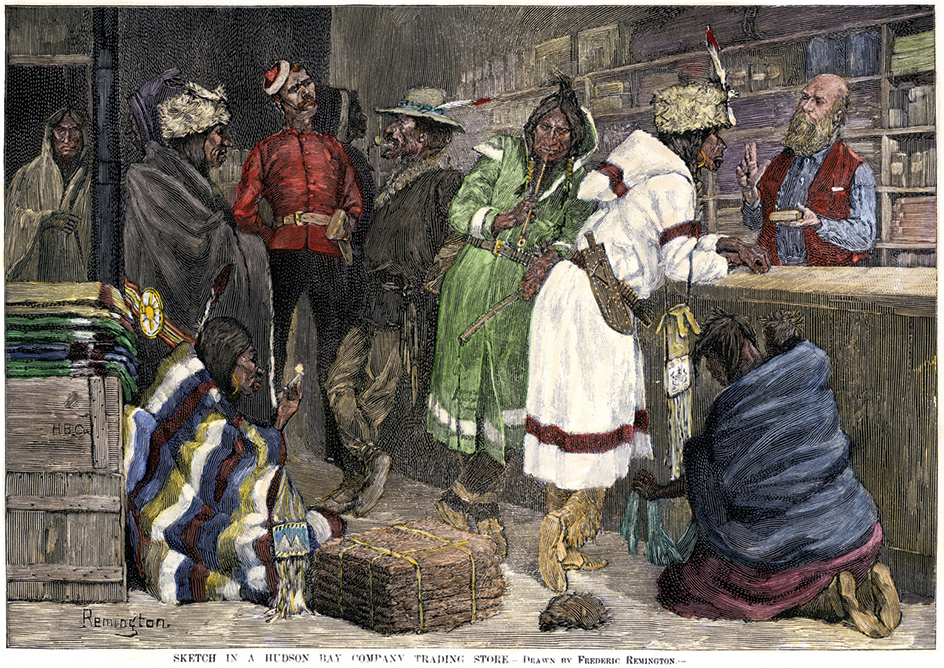Trading post is a type of marketplace where people bring products to sell or to exchange for other goods. In the United States, many posts serve Navajo people who live on a large reservation in Arizona, New Mexico, and Utah. At these posts, the Navajo sell goods and buy food, clothing, and farm equipment.
In ancient times, trading posts operated in the Near East. Later, Europeans set up trading posts as they explored various parts of the world. At first, before the development of money, traders usually bartered with one another—that is, they exchanged items for other items.
The first trading posts in North America were established during the early to mid-1500’s in what is now the Canadian province of Newfoundland and Labrador. By the mid-1800’s, trading posts had been set up throughout North America. Native Americans traded furs and hides to whites for such items as cloth, glass beads, guns, gunpowder, liquor, and metal goods.
Private companies and individuals set up many trading posts. The Hudson’s Bay Company opened posts along Hudson Bay in Canada after 1670 (see Hudson’s Bay Company ). In 1796, the U.S. government created a system of government trading posts, hoping to keep private traders from cheating indigenous (native) people. The government abolished these posts in 1822 because private traders opposed them. Many white traders later opened posts on Native American reservations and charged unfair prices, but the residents there had nowhere else to buy goods.

Many settlements that grew up around trading posts developed into large U.S. and Canadian cities. These communities included Chicago; Detroit; Kansas City, Missouri; Montreal; and Quebec.
